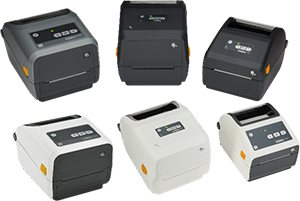When are Direct Transfer Printers the Best Choice ?
Thermal printers are the first choice for organizations requiring barcode labels with high-quality images printed in limited spaces. There are two similar but distinct technologies available. Both systems use a thermal printer head to apply heat to the barcode labels. The difference is in the methods used to produce the image. In direct thermal printing, the heat that is applied to the label creates a dark image of the barcode. Direct transfer printers, on the other hand, are a little more complicated but with their own advantages.
Technology Behind Direct Transfer Printers
The printhead of the thermal transfer printers applies heat to a ribbon, causing it to release ink onto the label, creating the barcode. The media absorbs the ink so the image is completely embedded in it. The result is unmatched quality and durability of the image, compared to the labels from any other print-on-demand devices. A bonus is that direct transfer printer ribbons are available in many different colors. 
RMS Omega is Proud to Partner with Zebra Technologies
RMS Omega has partnered with Zebra Technologies, a leading printer manufacturer, to represent their direct transfer printers to organizations, institutions and businesses across the country. An RMS Omega representative will be pleased to discuss the advantages of using direct thermal printers to help you decide if they provide the best fit for your application, including:
- Accept a wide range of media, including paper, polypropylene, and polyester products.
- Can create very durable tags, bands, and labels.
- Media-ribbon materials and adhesives are available to produce archival-quality labels able to withstand almost any environment.
- Offers a wide range of applications, from permanent and product identification, tracking of samples and files, tracking of circuit boards, tagging of assets, identifying inventory, labelling of lab specimens, and applications involving the outdoors and cold storage.
- Being able to withstand surface friction.
- Ability to stand up to heat and sunlight.
- Option to print in color.
- Shelf life is over a year.
Limitations
The limitations of using direct transfer printers are few and are certainly outweighed by their advantages. Still, users should be aware that:
- Direct transfer printers incur a somewhat higher operating cost than direct thermal printers, but this is often offset by improved print quality and versatility.
- Transfer printers use ribbons that have to be replaced, and this sometimes is a difficult and time-consuming process.
- Care has to be taken to match the right ribbon for the job at hand.
- It does not save any money to use lower-grade ribbons, as ink tends to build up and more frequent cleaning is required.
- Used ribbons must be disposed of so there are some environmental concerns.